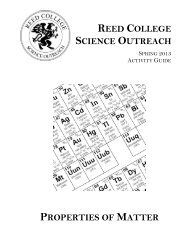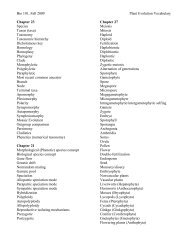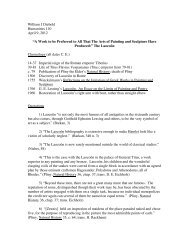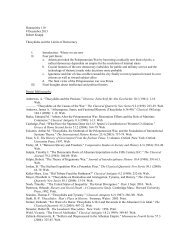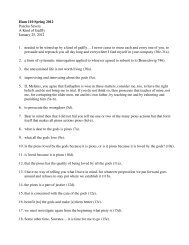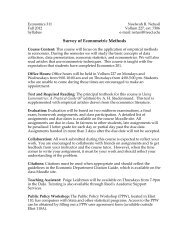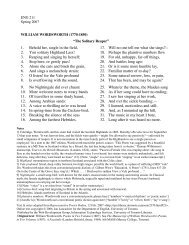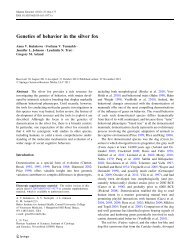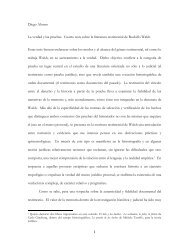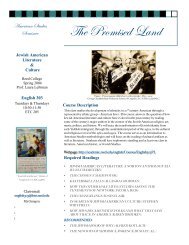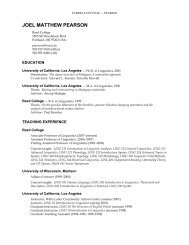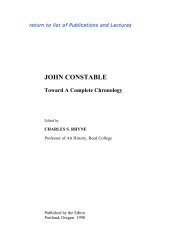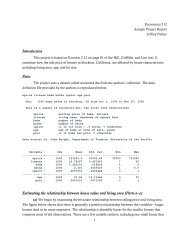Graphic and Photographic Documentation - Reed College
Graphic and Photographic Documentation - Reed College
Graphic and Photographic Documentation - Reed College
You also want an ePaper? Increase the reach of your titles
YUMPU automatically turns print PDFs into web optimized ePapers that Google loves.
This is one of a pair of books by Brunhouse describing the life stories of 15 Maya<br />
explorers <strong>and</strong> archaeologists who worked from the late 18 th to early 20 th centuries,<br />
their adventures in the Americas <strong>and</strong> their approaches in Maya studies. This volume,<br />
dealing with the later years, describes the lives of Teobert Maler, Alfred P. Maudslay,<br />
Sylvanus G. Morley, Frederick A. Michell-Hedges, Herbert J. Spinden, William E.<br />
Gates, <strong>and</strong> Fras Blom.<br />
Relatively little attention is given to the Puuc region. An account is given of the<br />
important discoveries made at Uxmal by Blom <strong>and</strong> his party in 1930 when carrying out<br />
research <strong>and</strong> making casts for the 1933 Century of Progress Exposition in Chicago<br />
(p.196). Brunhouse notes that Morley “considered the Governor’s Palace at Uxmal the<br />
finest building in prehispanic America, a view shared by many other people” (p.60). In<br />
the chapter on Spinden, more attention is given to theoretical concepts than in<br />
chapters on the other archaeologists, describing Spinden’s extensive system of<br />
correlation. Brunhouse writes that “he produced a brilliant analysis of the evolution of<br />
styles in A Study of Maya Art which remains a l<strong>and</strong>mark on the subject” (p.95). In the<br />
chapter on Morley, Brunhouse describes the advanced conservation practices of the<br />
Carnegie Institution of Washington (C.I.W.); its “refusal to ask for artifacts which might<br />
be found in the course of excavation”, insisting instead that the C.I.W. “must restrict its<br />
work to excavation <strong>and</strong> scholarly reports of the result.” “The other policy of the C.I.W.<br />
required faithful restoration of the ancient structures . . . the C.I.W. followed the rigid<br />
policy of utilizing only stones which had fallen from a structure <strong>and</strong> adding no others.<br />
If modern materials like steel supports were used to preserve a building, they were<br />
hidden from view” (p.67). There is an important bibliography; selective <strong>and</strong> critical,<br />
listing separately works by <strong>and</strong> about each of the 7 figures.<br />
The same author’s book, In Search of the Ancient Maya: the First Archaeologists,<br />
published two years before by the same press, describes the lives <strong>and</strong> careers of 8<br />
different explorer-archaeologists: Antonio del Rio <strong>and</strong> Guillermo Dupaix, Juan<br />
Galindo, Jean Frédéric Waldeck, John Lloyd Stephens, Charles Étienne Brasseur de<br />
Bourbourg, Augustus Le Plongeon, <strong>and</strong> Edward H. Thompson.<br />
C<br />
Castleberry, May, ed.<br />
The New World’s Old World: <strong>Photographic</strong> Views of Ancient America. Published on the<br />
occasion of an exhibition held at the AXA Gallery, New York, May 8 - July 19, 2003.<br />
Albuquerque: University of New Mexico Press, 2003.<br />
An excellent chronological survey of photographic images of pre-Hispanic architecture<br />
<strong>and</strong> man-made l<strong>and</strong>scape features in North, Central, <strong>and</strong> South America. Examples<br />
include photographs dating from shortly after the invention of photography to the<br />
present day. In her “Introduction”, Castleberry devotes 2 ½ pages to 19 th century<br />
explorer-photographers of Pre-Columbian sites, though without specific mention of the<br />
Puuc region. The book reproduces Maler’s unique 1891-1893 albumen silver prints,<br />
12



